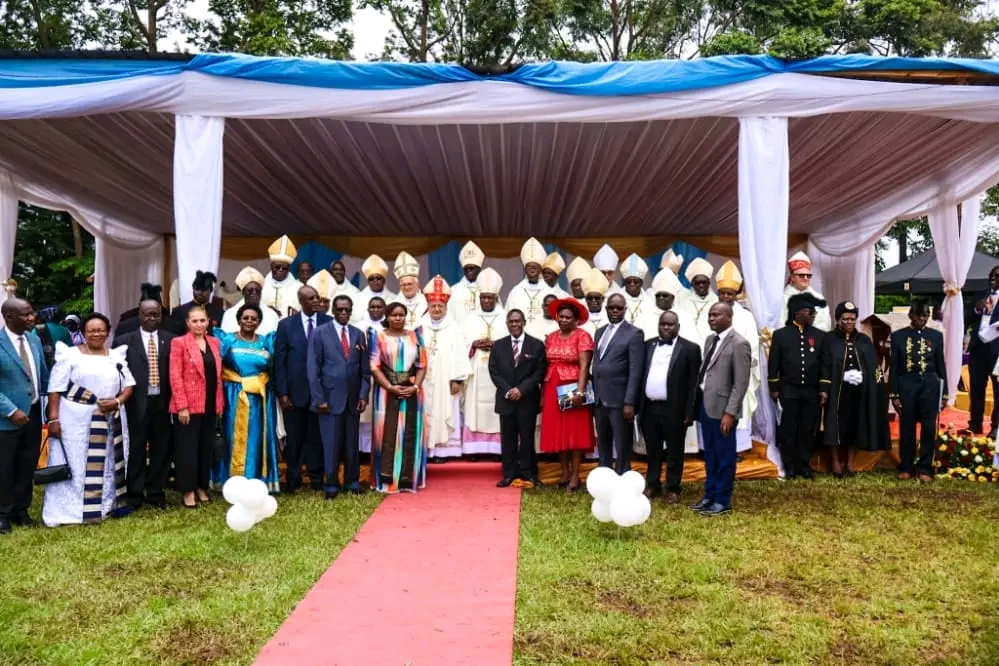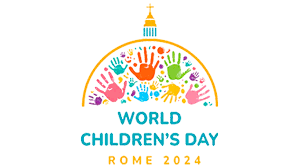UGANDA: Ggaba National Seminary “an Icon of Catholic Unity,” says President of Uganda Episcopal Conference at Golden Jubilee Celebration

H.E, the most Rev Luigi Bainco the Apostolic Nuncio to Uganda and Rt Rev Antony Zziwa the chairperson Uganda Episcopal conference with another Bishop
Peter Masereka
St Mary’s National Seminary Ggaba has celebrated 50 years of existence, sending joy and excitement across the country given that it is a symbol of a united Catholic Church in Uganda.
Opened in 1970, the National Seminary would have celebrated its golden jubilee in 2020 but the event was postponed due to COVID-19. On Saturday, dozens of priests and lay Catholics celebrated the institution that redefined priestly formation in the country.
Speaking at the event that took place on 12th November 2022, Bishop Dr Antony Zziwa the Uganda Episcopal Conference President described the celebrated National Seminary as an icon of unity for the Catholic Church in the country.
Rt. Rev. Zziwa who is the ordinary of Kiyinda-Mityana, a former student and Vice Rector of the institution, added that one of the goals of the establishment of this seminary was to diffuse rivalry, segregation, and disunity among the Catholics which was based on the missionary congregations that evangelized Uganda.
Prior to its establishment, the Catholics in Uganda were divided into three major groups including areas that had been evangelized by Missionaries of Africa (White Fathers), Verona Fathers and Mill Hill Father.
During procession, seminarians of Ggaba National Seminary who dressed like Uganda Martyrs lead, followed by thousands of priests most of them old Students, and bishops and Archbishops who make up the Episcopal Conference of Uganda
Each group of missionaries had its own seminarians and trained its own priests. Although they were all Catholic, they were perceived as different and, on many occasions, there erupted rivalry and disagreements among them to an extent of dividing their flock at times.
Fr Dr Emmanuel Kimbowa says to end this, they had to come up with a solution: training of future priests in one seminary was one of the suggested solutions.
In the same vein, Fr Dr Joseph Sserunjoji, writing in the seminary’s jubilee magazine, tagged the need for unity to the broader desire for unification and acquisition of national character by Uganda which had just received her independence.
During the preparation for Uganda’s political independence, the Church also got the inspiration of national unity. The strong wave of nationalism in the country subsequently influenced Catholic bishops to start national seminaries,” he wrote.
The process of unity and nationalism described by Fr Sserunjoji can be traced to 1964 as records show that during their plenary meeting, the Catholic bishops in Uganda agreed to found one national seminary with an African rector for all candidates to priesthood.”
In 1965, a decision was taken to nationalize the existing seminaries. The bishops had agreed that Katigondo in Masaka should house the national major seminary. However, the facilities at the place would soon be inadequate to take care of candidates for philosophy and theology from all over Uganda.
The first Archbishop of Kampala Emmanuel Nsubuga Kiwanuka who was later named Cardinal, gave the Episcopal building committee two pieces of land at Nsambya and Ggaba to choose a suitable place for the proposed institution. Interestingly, both pieces of land originally belonged to the Mill Hill fathers.
The committee chaired by Bishop Vincent McCauley (Fort Portal) assisted by Bishop Adrian Kivumbi Ddungu (Masaka) and James Odongo (Tororo) settled for Ggaba. The place had an existing seminary constructed by the Mill Hill fathers, also named St Mary’s, and a new one was built just near it.
Fr Dr Sserunjoji said that St Mary’s seminary of the Mill Hill fathers was turned into a pastoral institute for ongoing formation after it was deserted by its founders who had relocated to Kenya during the days of Idi Amin in the 1970’s.
“Later, on 16th February 1976, Emmanuel Cardinal Nsubuga decided against all odds, to turn the deserted structures into St Mbaaga Major Seminary, the objective being to cater for mature (late) vocations to the priesthood in Kampala Archdiocese,” he added.
In 1970, all four classes of Katigondo’s Theology students were transferred to St. Mary’s National Seminary as the institution had been established. Since then, 2,754 students have been enrolled; 1,990 of them have been ordained to the priesthood, and 19 of them have been raised to the order of episcopate (bishops and archbishops).
With the celebrations going on, Bishop Zziwa stressed that there is a need to reflect on whether the seminary has been able to achieve the objective of unity. He, however, challenged those who have passed through St Mary’s National Seminary to be the light that will dispel tribalism, segregation, and division among the faithful.
He additionally urged the seminary’s administration to continue emphasizing the formation of priests who can meet the Church’s present and future needs while also enabling it to become self-administering, self-propagating, and self-supporting.
Meanwhile, Most Rev. Paul Ssemogerere the Archbishop of Kampala noted that since the seminary’s founding, it has relied heavily on foreign donations which are declining yearly. He thus challenged the faithful in Uganda to take on their role and support the institution.
St. Mary’s National Major Seminary Ggaba is one of the four national seminaries in Uganda under the Uganda Episcopal Conference. The others are St. Thomas Aquinas Katigondo Seminary (a philosophicum), Uganda Martyrs Seminary Alokolum (a philosophicum), and St. Paul’s seminary Kinyamaseka which also offers Theology.
END


